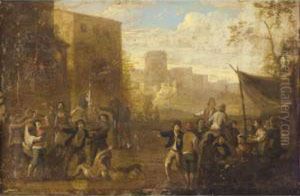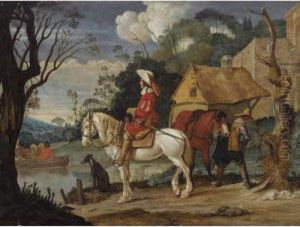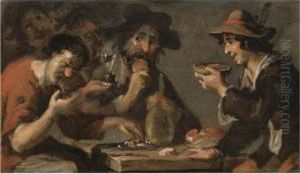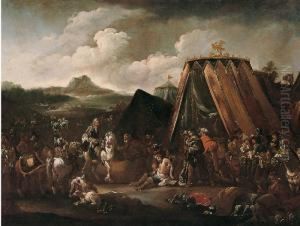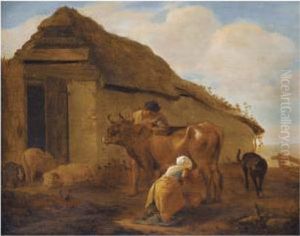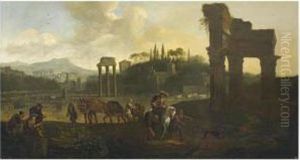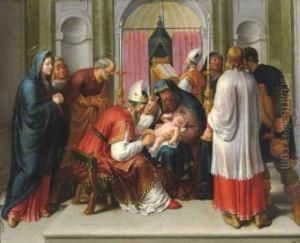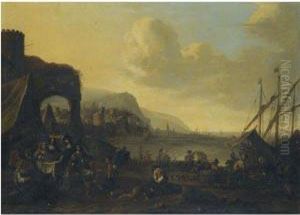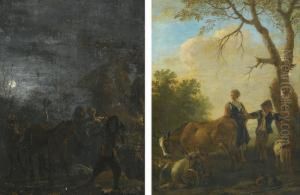Pieter Boddingh Van Laer Paintings
Pieter Bodding van Laer, also known as Pieter Boddingius or simply 'Il Bamboccio', was a Dutch artist born in 1599 in Haarlem, Netherlands. He was an influential painter during the Baroque period, known for his distinctive style that contributed to the 'Bambocciate' genre—scenes of daily life imbued with a sense of humor and often featuring peasants and beggars.
Van Laer came from an artistic family, with several of his brothers also becoming painters. He moved to Rome around 1625, where he became a part of the Bentvueghels, a society of mostly Dutch and Flemish artists residing in the city. It was in Rome that he acquired the nickname 'Il Bamboccio', which referred to his unusual physical appearance, but also came to denote the style of genre painting he popularized. His works were influential in Rome and were appreciated for their realism and the rustic, often comedic subjects that contrasted with the grandeur of the Roman art prevailing at the time.
Van Laer's paintings frequently depicted the Italian countryside, with its bandits, peasants, and other figures from the lower strata of society, engaged in tavern scenes, festivals, and other everyday activities. His work was characterized by a keen observation of nature and people, a talent for storytelling through imagery, and the use of chiaroscuro to enhance the drama of his scenes.
Despite his success in Rome, Van Laer returned to the Netherlands around 1639, possibly due to the changing artistic climate as classicism began to dominate. While his works continued to be popular in Rome even after his departure, Pieter Bodding van Laer's influence on Dutch painting was also significant. He inspired a number of Dutch and Flemish painters who went on to develop the genre of peasant scenes further, including his brother Roedolff and artists like Johannes Lingelbach and Jan Miel.
Pieter Bodding van Laer's exact date of death is not known, but it is believed he died in Haarlem around 1642. Despite the lack of precise records regarding the end of his life, his artistic legacy endures, and he is credited with contributing to the development of the Dutch Golden Age of painting by introducing new subject matter and an innovative approach to genre scenes.
